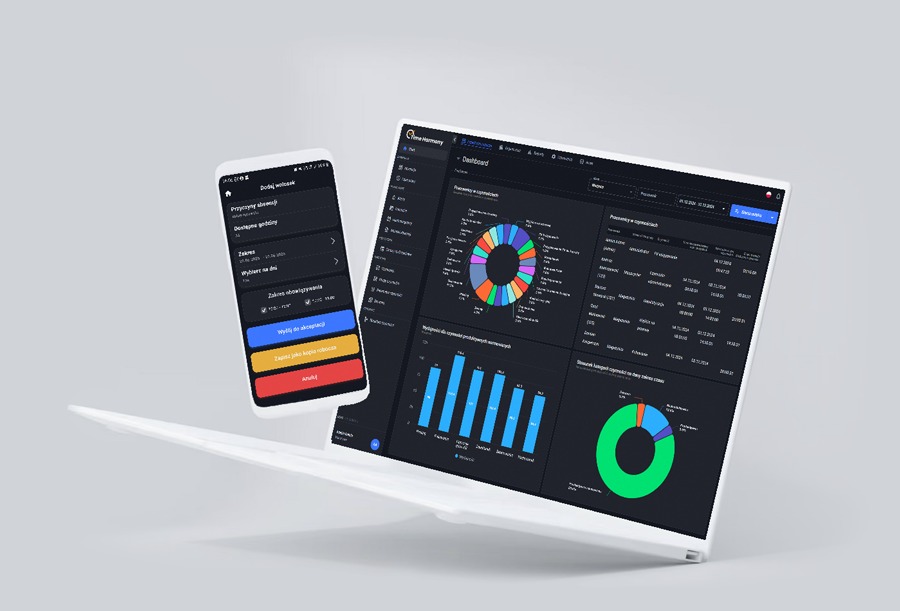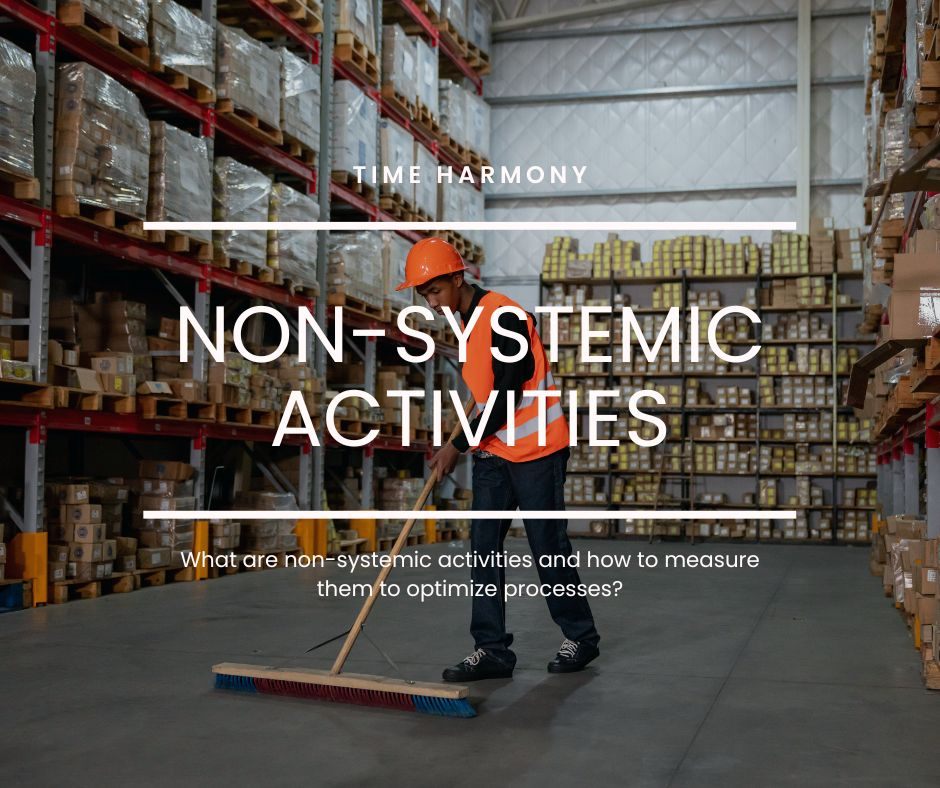Non-systemic activities are an important element of an employee's working time. Based on our experience in working with clients, we estimate that they can account for up to 30% of the total working time. In the era of rising labour costs, it is worth taking a closer look at this area to look for a field to generate savings.
In the following article, we will introduce you to our definition of non-systemic activities, explain how we divide them and answer the question whether it is possible to reduce all non-systemic activities.
Thus:
What are non-systemic activities?
Most of the warehouse systems that we encounter at our clients' locations measure only system activities, i.e. those recorded on scanners and other workstations used by employees. This is valuable knowledge that allows you to evaluate processes, providing data for the analysis of working time.
This is where we enter the division of non-systemic activities into procedural activities, necessary as part of the process, and non-procedural activities, which make up the so-called idle time.
Non-systemic, procedural vs. non-procedural activities
Activities such as the cleaning work mentioned above, or the folding of cartons, are necessary activities that are part of the processes. It is worth measuring them to know how much time they take and, for example, how this time is converted into the cost of remuneration. You can also perform a cross-location benchmark and see how much time these activities take on a global scale for the entire company. Some of the non-system activities can be attributed to a specific process by assigning them specific standards and parameters.
On the other hand, the idle activities also mentioned above are, for example, the time of preparation for work, i.e. the time between the declared return from a break and the taking of the first activity. Usually, this is a lot of space for analysis and optimization.
Each organization has its own specificity and characteristic non-system activities. As part of process optimization, it is worth measuring them and assessing their usefulness.
Our reports will provide information on how much time employees spend on non-system activities, allowing you to investigate the possible cause of exceeding the assumed standards. Data granularity gives you the ability to see exactly which activities are taking longer than they should.
How do we measure non-systemic activities at Time Harmony?
Non-systemic activities are declared by employees on Time Harmony devices, in the personal application or via the web panel.
Recording of non-systemic activities will not put an additional burden on employees
You don't have to worry about imposing additional obligations on employees in the form of recording out-of-system activities. We have made every effort to make the system as intuitive as possible, and a lot of data is written in automatically. As a result, the employee does not have to have many interactions with the system.
An example of automation is the combination of a system with turnstiles. Just passing through the gate generates information and opens the work card. After a few minutes, the system receives information about the first scanning activity. Time Harmony automatically calculates how long it took to prepare for work, i.e. the time between coming to work and starting work. The preparation time for work after returning from a break is calculated in the same way. Leaving work through the turnstile and marking the exit action closes the employee's card for the day.
If, like us, you see the potential of measuring non-system activities for your company, please contact us!

Optimize working time and efficiency of your team

